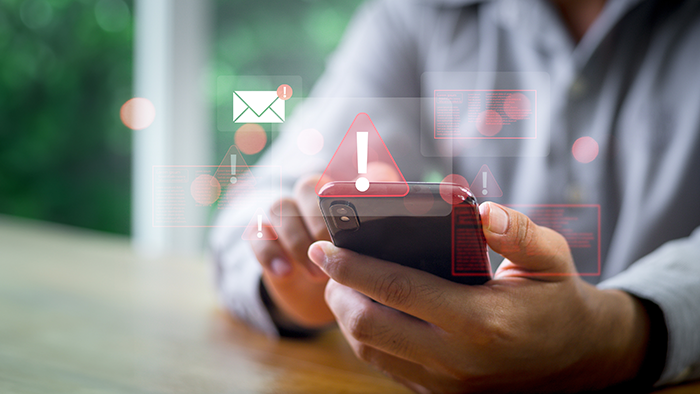Security Tips You Need to Know
First Savings Bank of Hegewisch is committed to maintaining the privacy and security of our client's information. We will NEVER call or email you requesting personal information or ask for your Access ID or password.
Please contact us immediately at 800-752-8382 if you believe your online banking service, Access ID, and/or Password have been compromised or you have provided personal and/or account related information through a suspicious email or Pop-Up.
OnGuardOnline.gov is the federal government's website to help you be safe, secure and responsible online.
Visit OnGuardOnline.gov
Cybersecurity Guide for Financial Institutions. You may view or download the Cybersecurity Security Guide for Financial Insitutions by clicking on the button below. The information has been developed by the FDIC to inform customer on how they can protect themselves from Cybersecurity fraud.
cybersecurity guide

Identity Theft Prevention
Millions of people are impacted by identity theft every year. It costs valuable time and money to get your life back together if you're a victim of identity theft. What can you do to protect your personal and financial information?
How to Prevent Identity Theft
- Protect Personal Information: Avoid sharing sensitive information like your Social Security number, bank account details, or passwords over the phone, email, or social media.
- Use Strong Passwords: Create complex passwords using a mix of letters, numbers, and symbols. Consider using a password manager to keep track of them.
- Enable Two-Factor Authentication: Add an extra layer of security to your online accounts by enabling two-factor authentication wherever possible.
- Monitor Your Accounts: Regularly review your bank and credit card statements for any unauthorized transactions. Set up alerts for suspicious activity.
- Secure Your Devices: Use antivirus software, keep your operating system updated, and avoid using public Wi-Fi for financial transactions.
- Shred Sensitive Documents: Shred documents containing personal information before disposing of them to prevent dumpster divers from accessing your data.
- Be Cautious Online: Be wary of phishing scams and avoid clicking on links or downloading attachments from unknown sources.
Steps to Take if You Believe You Are a Victim of Identity Theft
- Report to the Federal Trade Commission (FTC): Visit IdentityTheft.gov to report the theft and create a recovery plan.
- Contact Credit Bureaus: Place a fraud alert on your credit reports by contacting one of the three major credit bureaus (Equifax, Experian, TransUnion). Consider freezing your credit to prevent new accounts from being opened in your name.
- Notify Your Bank and Credit Card Companies: Inform your financial institutions about the theft. They can help you close fraudulent accounts and issue new cards.
- File a Police Report: Report the identity theft to your local police department. Obtain a copy of the report for your records.
- Review Your Credit Reports: Obtain free copies of your credit reports from AnnualCreditReport.com and review them for any unauthorized accounts or activities.
- Change Passwords and PINs: Update the passwords and PINs for your online accounts, especially those related to financial institutions.
- Monitor Your Identity: Consider enrolling in an identity theft protection service to help monitor your personal information and alert you to potential fraud.

Mobile Security Tips
- Lock the device. Configure your device to require a passcode to gain access if this feature is supported on your device.
- Do not store sensitive information on your mobile device. If your device is lost or stolen your personal and account information could be compromised.
- Keep your mobile device's software up-to-date. Accept the patches - Similar to PCs, mobile phones need to be patched often to eliminate vulnerabilities found since the phone's release. Use the automatic update option if one is available.
- Secure your Internet connection. Connect to networks using the highest level of security available, such as WPA2 for wireless networks. Connecting to unknown, open wireless networks is very risky.
- Avoid questionable Apps. Download Apps only from trusted App stores and stick with the more popular apps. Review the privacy policy and data access of any applications (Apps) you wish to download; before installing them.
- Back up your data.
- Disable features such as Bluetooth and Wi-Fi when not actively in use. Set Bluetooth-enabled devices to "non-discoverable" when Bluetooth is enabled.
- "Sign out" or "Log off" when finished with an app rather than just closing it.
- Delete all information stored on the device before turning in or selling your phone. Use the "factory reset" function to permanently erase all content and settings stored on the device.
ATM Security Tips
Customers are advised to exercise care when using an automated teller machine (ATM). The precautions you should exercise are to:
- Be aware of the surroundings when using an automated teller machine, particularly during the hours of darkness;
- Be accompanied by another person when using an automated teller machine, particularly during the hours of darkness
- Refrain from displaying cash, to place cash in a pocket as soon as a transaction is completed, and to count cash in the safety of a locked enclosure such as a car or home
- Use another automated teller machine or return at a later time if anything suspicious is noticed when using or considering using an automated teller machine
- Report all crimes immediately to the operator of the automated teller machine or to local law enforcement officials.